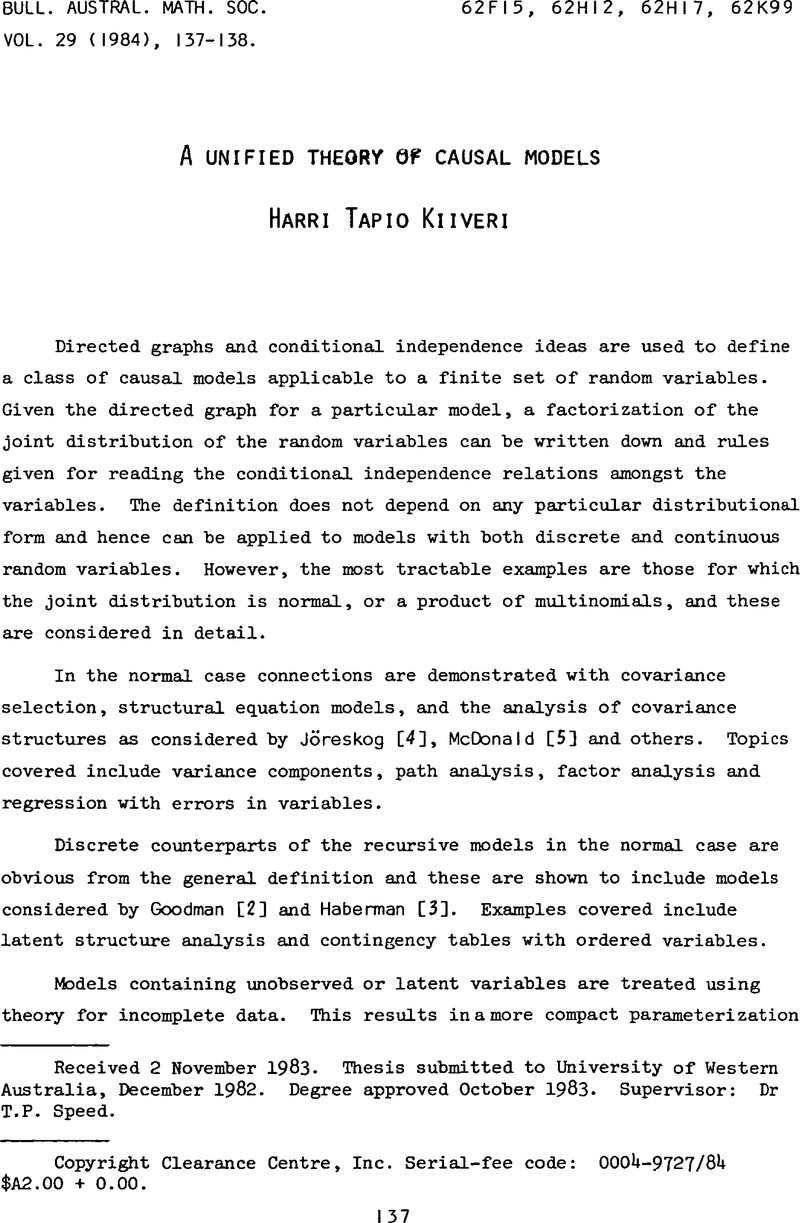No CrossRef data available.
Article contents
A Unified Theory of Causal Models
Published online by Cambridge University Press: 17 April 2009
Abstract
An abstract is not available for this content so a preview has been provided. As you have access to this content, a full PDF is available via the ‘Save PDF’ action button.

- Type
- Abstracts of Australasian PhD Theses
- Information
- Bulletin of the Australian Mathematical Society , Volume 29 , Issue 1 , February 1984 , pp. 137 - 138
- Copyright
- Copyright © Australian Mathematical Society 1984
References
[1]Dempster, Arthur P., Laird, N.M. and Rubin, Donald B., “Maximum likelihood from incomplete data via the EM algorithm”, J. Roy. Statist. Soc. Ser. B 39 (1977), 1–38.Google Scholar
[2]Goodman, L.A., “Analysising qualitative/categorical data”, Log-linear models and latent structure analysis, – (Abt Books, Cambridge, Massachusetts, 1978).Google Scholar
[3]Haberman, Shelby J., “Product models for frequency tables involving indirect observation”, Ann. Statist. 5 (1977), 1124–1147.Google Scholar
[4]Jöreskog, Karl G., “Structural equation models in the social sciences: specification estimation and testing, Applications of statistics, 265–287 (Proc. Sympos. Wright State University, Dayton, Ohio, 1976. North-Holland, Amsterdam, 1977).Google Scholar
[5]McDonald, R.P., “A simple comprehensive model for the analysis of covariance structures”, British J. Math. Statist. Psych. 31 (1978), 59–72.Google Scholar




